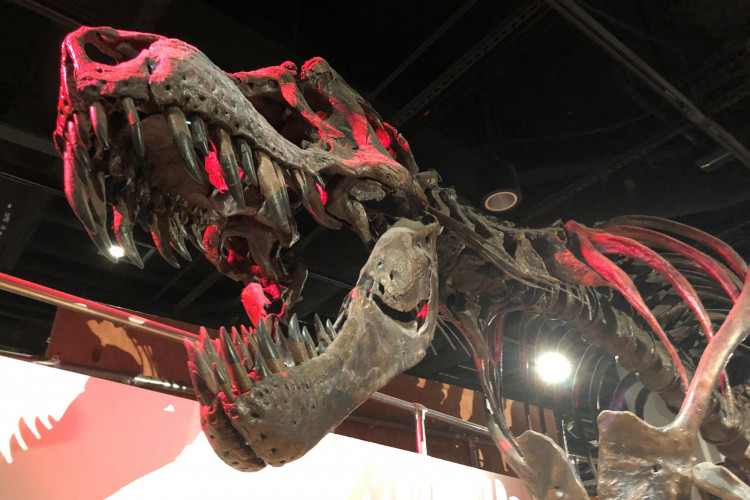T. rex was not always the largest or most ferocious carnivore of the Mesozoic period. Apparently, it lived in the shadow of larger carnivores with serrated, knife-like teeth for tens of millions of years.
These predators were carcharodontosaurs, also known as "shark-toothed lizards," and paleontologists have recently named a new species from a critical period in dinosaur history.
Scientists called it Ulughbegsaurus uzbekistanensis, after Ulugh Beg, a 15th-century astronomer, mathematician and sultan from what is now Uzbekistan.
The beast was 26 feet long and weighed 2,200 pounds, making it longer than an African elephant and heavier than a bison.
The dinosaur was much larger - twice the length and more than five times heavier - than its ecosystem's previously known apex predator, a tyrannosaur, the researchers discovered.
The jawbone fragment was discovered in Uzbekistan's Kyzylkum Desert in the 1980s, and it was rediscovered in 2019 in an Uzbekistan museum collection.
The two dinosaur groups were very similar, but carcharodontosaurs were more slender and light-built than tyrannosaurs.
Nonetheless, carcharodontosaurs were typically larger than tyrannosaurs, reaching weights of more than 13,200 pounds. The carcharodontosaurs then vanished around 90 million to 80 million years ago, and tyrannosaurs grew in size, eventually taking over as apex predators in Asia and North America.
The Ulughbegsaurus is not the first dinosaur discovered in the area. The fossil was discovered in the Bissekty Formation, a stack of 90- to 92-million-year-old rocks that contains the remains of horned dinosaurs, duckbill dinosaurs, long-necked sauropod dinosaurs, and more.
The finding of U. uzbekistanensis is the last known occurrence of a carcharodontosaur and a tyrannosaur coexisting before the carcharodontosaurs went extinct, according to the team.
The researchers discovered that U. uzbekistanensis has distinct bony bumps above its teeth. It does, however, have bony ridges on the sides of its jaw, which are similar to those found in the 79.5 million-year-old tyrannosaur Thanatotheristes degrootorum (whose name means "reaper of death") from what is now Canada.
The new dinosaur was described Wednesday in the Royal Society Open Science by Kohei Tanaka of the University of Tsukba, Darla Zelenitsky of the University of Calgary, and colleagues. It is known so far only from a single bone-a portion of the upper jaw discovered in the sandy reaches of the Kyzylkum Desert.
Nonetheless, the anatomical details of the bone indicate that it belonged to the environment's largest predator.






